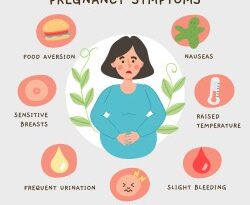How To Use A Pregnancy Pillow To Get Better Sleep
Pregnancy is a beautiful and transformative experience in a woman’s life, but it can also come with its fair share of discomfort, especially when it comes to sleep. As your body changes to accommodate your growing baby, finding a comfortable sleeping position can become increasingly challenging. This is where a pregnancy pillow can be a true lifesaver. In this comprehensive guide, we will explore everything you need to know how to use pregnancy pillows effectively for a restful night’s sleep.
How to Use a Pregnancy Pillow
Now that you’re familiar with the types of pregnancy pillows available, let’s delve into the practical aspects of using them effectively.
Choose the Right Pillow
Selecting the right pregnancy pillow is crucial for comfort and support. Consider factors such as your preferred sleeping position, the size of your bed, and the level of support you need. Take the time to research and read reviews to find a pillow that suits your needs.
Placement Matters
Where and how you place your pregnancy pillow can significantly impact your comfort. Here are some tips for proper placement:
- For Back Support: If you’re experiencing back pain, place the pillow behind you and lean back into it. This can help align your spine and relieve pressure on your lower back.
- For Belly Support: To support your growing belly, position the pillow beneath your abdomen. This can reduce strain on your back and hips.
- For Hip and Knee Support: If you’re a side sleeper, place the pillow between your knees and thighs to keep your hips and spine properly aligned.
Experiment with Different Positions
Pregnancy pillows are versatile and can be used in various positions to suit your comfort needs. Here are some common positions:
- Side Sleeping: If you’re a side sleeper, hug the pregnancy pillow to your body to support your belly and back. You can also place it between your knees for added support.
- Back Sleeping: If you prefer to sleep on your back, place the pillow behind you to keep you in a slightly inclined position, which can help with breathing and reduce snoring.
- Sitting: You can use your pregnancy pillow as a backrest while sitting on the couch or in bed. This provides additional support for your back.
Don’t Forget Pillow Maintenance
To ensure your pregnancy pillow remains clean and comfortable throughout your pregnancy, follow these maintenance tips:
- Regularly Wash the Cover: Most pregnancy pillows come with removable and washable covers. Wash them according to the manufacturer’s instructions to keep your pillow fresh.
- Fluff Your Pillow: Pregnancy pillows can lose their shape over time. Periodically fluff and adjust the pillow to maintain its support.
- Consider a Pillowcase: If your pregnancy pillow doesn’t come with a cover, using a pillowcase can make it more comfortable and easier to clean.
The Benefits of Using a Pregnancy Pillow
Before we dive into the details of using a pregnancy pillow, let’s understand why they are so highly recommended for expectant mothers.
Provides Proper Support
One of the most significant benefits of a pregnancy pillow is the support it offers to your changing body. As your belly grows, your spine may become misaligned, leading to back pain. A pregnancy pillow helps to align your spine, reducing discomfort and pain.
Relieves Pressure Points
Pregnancy pillows are designed to relieve pressure points, especially in the hips and lower back. These pillows provide support to these areas, which can be particularly sore during pregnancy.
Promotes Better Sleep
Sleeping comfortably during pregnancy can be a challenge due to the extra weight and changing body shape. A pregnancy pillow can help you find a comfortable sleeping position, resulting in better sleep quality.
Versatile Usage
Pregnancy pillows are not just for sleeping; they can be used for various purposes, such as propping you up for reading or providing support while sitting on the couch.
Postpartum Use
Many pregnancy pillows can be used postpartum as well. They can help provide support while breastfeeding or bottle-feeding your baby, making them a versatile investment.
Types of Pregnancy Pillows
Before you learn how to use a pregnancy pillow, it’s essential to understand the different types available. Each type caters to specific needs and preferences.
Full-Length Pregnancy Pillow
A full-length pregnancy pillow is a long, straight pillow that supports your entire body. It can be curved into various shapes to provide support where you need it most, including your back, belly, and knees.
C-Shaped Pregnancy Pillow
The C-shaped pregnancy pillow is designed to cradle your entire body, resembling the shape of a letter ‘C.’ It provides support for your head, neck, back, and legs simultaneously. This type is great for those who want full-body support.
U-Shaped Pregnancy Pillow
The U-shaped pregnancy pillow is similar to the C-shaped pillow but offers support on both sides. It’s perfect for those who like to switch sides during the night without having to reposition their pillow.
Wedge Pregnancy Pillow
A wedge pregnancy pillow is a small, triangular pillow that you can place under your belly, back, or between your knees for targeted support. It’s highly portable and ideal for travel.
Tips for Better Sleep During Pregnancy
While using a pregnancy pillow can significantly improve your sleep quality during pregnancy, there are additional tips that can enhance your overall sleep experience.
Create a Bedtime Routine
Establishing a bedtime routine can signal to your body that it’s time to wind down and prepare for sleep. Consider activities such as reading a book, taking a warm bath, or practicing relaxation techniques.
Stay Hydrated
Dehydration can lead to discomfort, so make sure to stay adequately hydrated during the day. However, reduce your fluid intake in the evening to minimize nighttime bathroom trips.
Watch Your Diet
Avoid heavy or spicy meals close to bedtime, as they can cause indigestion and discomfort. Opt for light, easily digestible foods in the evening.
Adjust Your Sleep Environment
Ensure your bedroom is conducive to sleep by keeping it dark, quiet, and at a comfortable temperature. Consider using blackout curtains, earplugs, or a white noise machine if needed.
When to Consult a Healthcare Provider
While pregnancy pillows can provide significant relief, there may be situations where you should consult your healthcare provider for sleep-related issues during pregnancy. These may include:
- Severe Pain: If you experience severe pain, especially in your back or pelvis, consult your healthcare provider to rule out any underlying issues.
- Sleep Apnea or Snoring: If your snoring becomes severe or you experience symptoms of sleep apnea, such as loud snoring and interrupted breathing, discuss this with your healthcare provider.
- Heartburn: Persistent heartburn can affect sleep quality. Your healthcare provider can recommend safe remedies or medications to alleviate this discomfort.
- Swelling or Edema: If you notice excessive swelling in your extremities, particularly in your legs, it’s essential to consult your healthcare provider, as this could be a sign of a more serious condition.
Pregnancy pillows can be a game-changer for expectant mothers seeking a good night’s sleep. By choosing the right pillow and learning how to use it effectively, you can minimize discomfort and maximize your rest during this special time in your life. Remember that pregnancy is a unique journey for each woman, so be open to experimenting with different pillow positions and sleep strategies to find what works best for you. With the right support, you can enjoy a comfortable and restful night’s sleep throughout your pregnancy. Sweet dreams!




